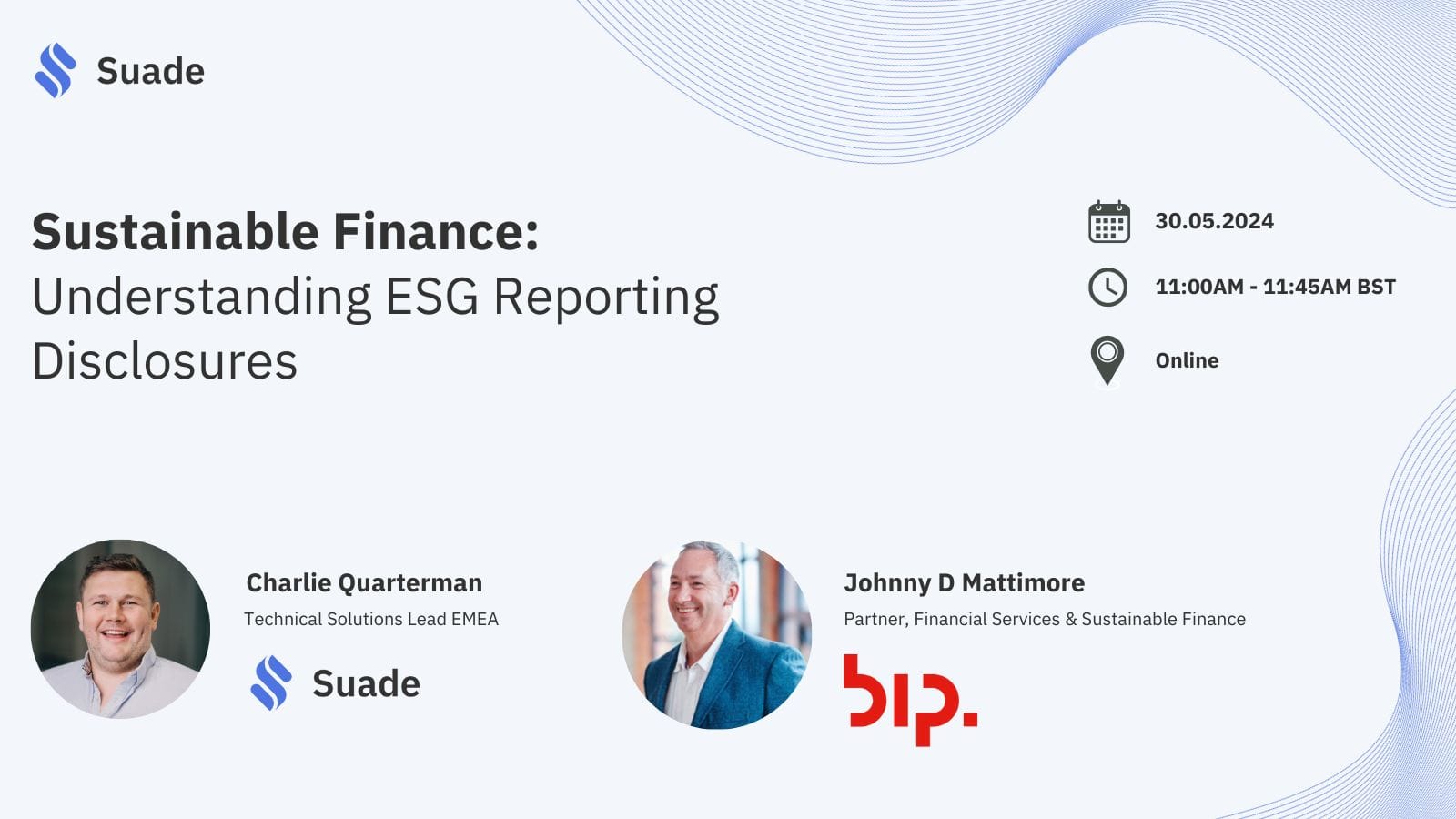
Capturing the Pulse of Sustainable Finance in Risk management
Date: May 30, 2024
Time: 11:00 am BST
Speakers
Johnny D Mattimore, Partner of Financial Services & Sustainable Finance at BIP and Charlie Quarterman, Technical Solutions Lead at Suade
Integrating ESG Data into Financial Risk Management
In today's rapidly evolving financial landscape, integrating Environmental, Social, and Governance (ESG) data into risk management is essential for sustainable business practices. Here’s how firms can achieve this:
Ensuring Data Quality and Consistency
To use ESG data effectively, firms must ensure its quality and consistency. This involves thorough vendor due diligence to understand data collection methods and quality control processes. Regular audits should be conducted to verify data accuracy and reliability. Utilising integrated data management systems can help track data lineage and maintain high standards of data quality.
Adapting to Technological Changes
Rapid advancements in AI, machine learning, and data processing technologies necessitate agility in data sourcing and processing systems. Firms should stay flexible to quickly adopt new technologies. Investing in continuous learning and development ensures that teams remain updated with the latest advancements. Collaborating with fintech innovators and participating in open-source initiatives can keep firms at the forefront of data integration and usage.
Aligning with Business and Regulatory Needs
Aligning ESG data initiatives with business goals and regulatory requirements is crucial. Firms should define clear objectives for ESG data integration and utilise cross-functional teams comprising experts in finance, ESG metrics, and data science to develop effective solutions. Regular updates to the board and stakeholders about ESG data initiatives help ensure transparency and accountability.

Key Insights for Financial Risk Management
- Rich Internal Data: Internal management accounts contain richer data than external reports, which is vital for informed decision-making.
- Evolving Role of Fintech: Fintech is moving from regulatory compliance to supporting business decision-making with high-quality data inputs.
- Managing Climate Risks: For long-term assets like real estate, managing climate risks such as floods is critical. Parametric insurance and secondary market mechanisms can mitigate these risks.
- Regulatory Compliance: Frameworks like the EBA's Pillar Three require banks to disclose unquantified risks, including ESG factors. Standardised methods for risk evaluation are essential.
- Data Management: Adopting data mesh architectures allows for scalable data integration. Open-source solutions and industry collaborations can reduce costs and enhance efficiency.
Strategic Integration of ESG Data
Avoid siloing ESG data; integrate it for strategic decision-making. Effective use of AI and machine learning depends on access to high-quality, relevant datasets.
By focusing on robust data management, staying agile with technological advancements, and aligning with regulatory requirements, firms can integrate ESG data into their risk management frameworks. This approach leads to more informed decisions and sustainable business practices.